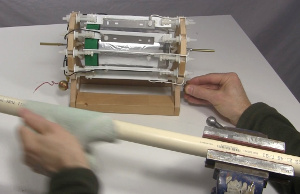Wow how the time flies. It seems like only couple of weeks ago we were unveiling the film we shot at Salton Sea to launch this, our third global hacking initiative called The Hackaday Prize. What we want is to see you use those skills of yours to Build Something that Matters. Come up with a way to solve a technology problem and score yourself some sweet prizes. This weekend, anything goes.
The current challenge is called Anything Goes and the deadline to enter your project is Monday at 7am PDT. You need to show off a prototype of your idea, and have at least four (4) build logs about your work on your project page. Use the menu in the left sidebar of your project page to enter it in the Hackaday Prize (or in the Anything Goes round if you entered it during the first challenge).
Are you confused about what is happening here? Let’s hit the high points:
- Every five weeks we start a new Challenge Round which is basically a whole new contest. You can enter now — it’s not too late. If you entered previously you may enter again.
- From each challenge round we will select twenty projects to move on to the final round, and award them each $1,000 for their achievement.
- When all five rounds are complete, those hundred final projects will be viewed by our expert judges who will pick five winners who get the big cash prizes: $150k, $25k, $10k, $10k, and $5k. The Grand Prize winner will also be offered a residency at the Supplyframe Design Lab in Pasadena, CA.
- The moral of the story is: build something awesome because that’s what you do. But this weekend, make it something that helps people and you just might be one of the twenty moving on for a shot at a much larger purse.
It’s true, we have a lot of projects in the running for this year’s prize; right about 700 entries at the time of writing. But, like I said above, each Challenge is a new contest. We are just about to hit 300 entries for Anything Goes. Twenty will be finalists, which means your entry has about a 1 in 15 chance at this point. Make this weekend your personal hackathon — build it, document it, and don’t forget to submit it.




















